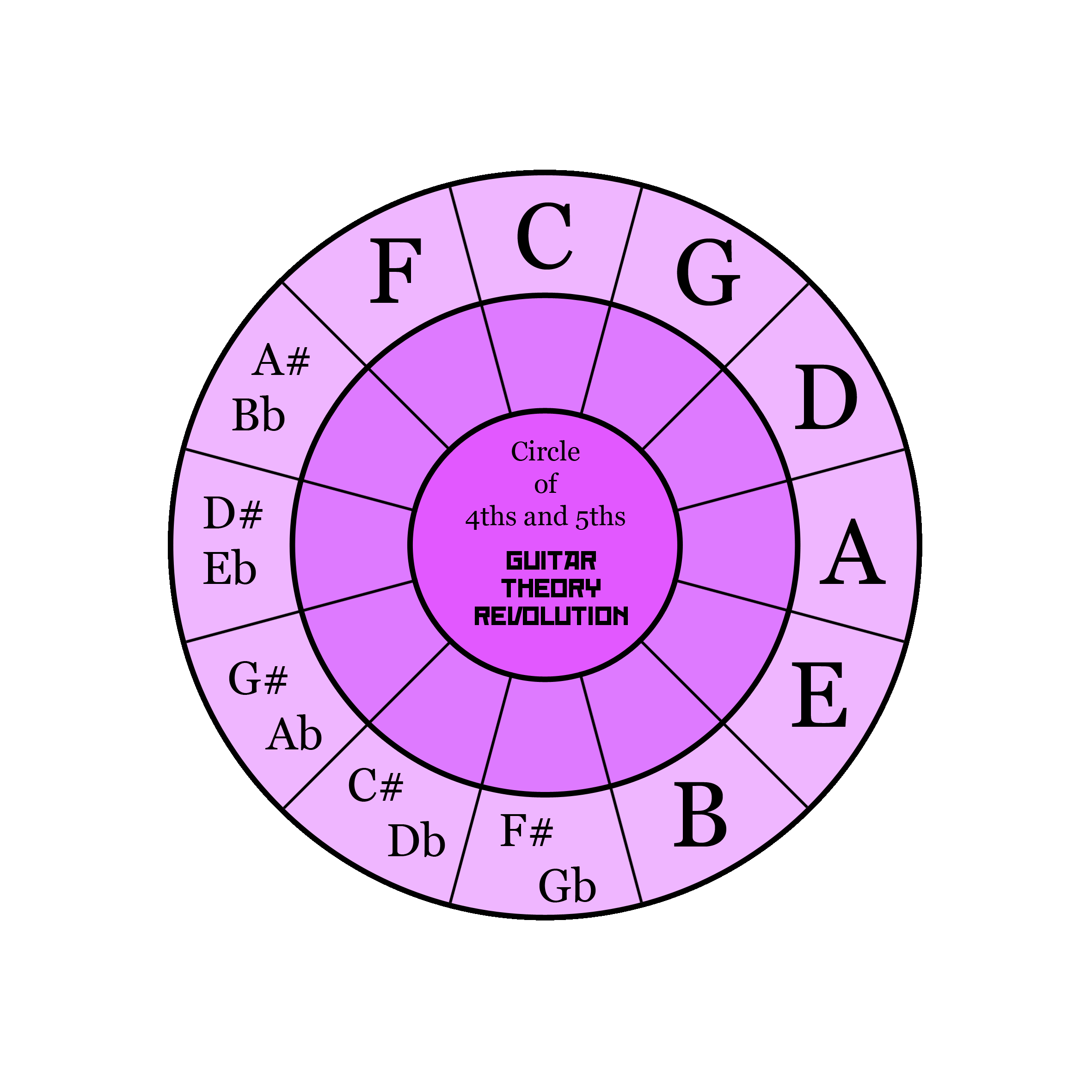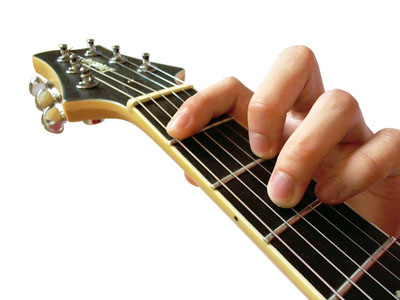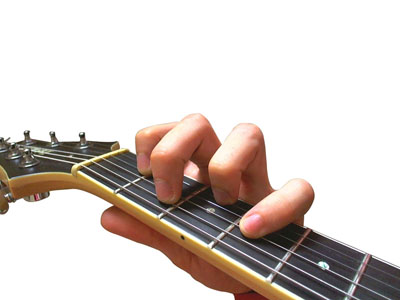
The circle of 4ths and 5ths is a way of visually representing the relationships between the 12 tones of the chromatic scale. It is one of the most useful tools you can use to understand music theory because it gives you insights into the fundamental way that Western music works.
The great thing is that standard guitar tuning follows the circle of 4ths and 5ths so if you’ve followed previous lessons (Lesson 6: The Five Fret Pattern and Lesson 8: The BEAD-GCF Pattern) you’ll already know a lot about the circle. This lesson will show you how to find the notes in the circle as well as some practical applications for your guitar playing.
The order of the notes around the circle (which determines their relationship to each other) can be found as follows. Starting at the top with C (though you an start with any note) you can find the next note in the clockwise direction by finding the next note 7 notes along in the chromatic scale (the chromatic scale is all 12 notes) as follows: C – C# – D – D# – E – F – F# – G. The interval name of this 7 note / fret distance is the Perfect 5th.
To find the next note name in the clockwise direction we move another 7 notes up the chromatic scale (or 7 frets up the neck) like this: G – G# – A – A# – B – C – C# – D. Continuing in this way, finding the next note around the circle by moving up 7 notes / frets in the chromatic scale, you’ll find all notes in the following order: C – G – D – A – E – B – F#/Gb – C#/Db – G#/Ab – D#/Eb – A#/Bb – F. That is how you find the notes around the circle in the clockwise direction.
You can also find the notes in the anti-clockwise direction by moving along the chromatic scale in Perfect 4th intervals which is a 5 note / fret distance. Again, starting with C you will find the next note to be F like this: C – C# – D – D# – E – F.
Using the above you’ll be able to find out in which order all 12 notes appear around the circle as shown in the diagram at the start of this lesson.
Earlier I mentioned that previous lessons will have given you a good grounding for learning this circle. The guitar strings are tuned (in standard tuning) from the lowest to the highest string in Perfect 4th’s (or a 5 fret distance), the same as the anti-clockwise direction around the circle.
The BEAD-GCF pattern that was easy to remember in the previous lesson can be found by locating the B and then following the circle in the anti-clockwise direction: B – E – A – D – G – C – F – Bb – Eb – Ab – Db – Gb. You can start to see why the guitar is such a great instrument to learn theory on.
Practical Applications
There are many ways in which this circle can help your understanding of music theory and your guitar playing. In this lesson I’ll show one of the things you can do with the circle; how to determine which chords fit in a particular Major key. This will help you when writing your own songs, figuring out songs by ear or when transposing a song to a different key.
Choose a key for which you want to know the chords, for example the key of C. The 7 chords for each key appear in the same order as shown by the Roman numerals. I, ii, iii, IV, V, vi, viiº. Capital numerals denote Major chords while small numerals are minor chords. The viiº is a diminished chord (For a lesson on how to play these chords see: Major, Minor and Diminished Chords).
The chords for the key of C in the example below are (I) C Major, (ii) D minor, (iii) E minor, (IV) F Major, (V) G Major, (vi) A minor, (viiº) B Diminished.

The pattern is always the same as you can see for the key of E Major in the diagram below. Just slide the pattern around the circle until the I is over your chosen key and you’ll know all the chords for that particular Major key.
Now when you hear people talk about a I – IV – V progression in the key of B Major you’ll know what they’re talking about.
If you have a song that uses the progression F# Major – B Major – C# Major but you want to change it to the key of E Major, you do the following. First identify the chord pattern, in this case I – IV – V by having the Roman numeral patterns centered around F#. Then slide the Roman numerals pattern around the neck until the I is over the E. Now you’ll see that the same song in the key of E uses the chord progression E Major – A Major – B Major.

Knowing this will help your song writing as well. Choose a key and then some chords in that key to guarantee good sounding progressions. Experiment with different progressions to see what works and write down the Roman numerals for future reference. Another exercise to do is to figure out the patterns of popular songs, you’ll find that many songs share the same progressions but in different keys. This will help you when figuring out songs by ear.
There are many more things you can do with the circle of 4ths and 5ths and I’ll cover them in future lessons. If you want to learn more about how the Circle of 4ths and 5ths and the Roman numeral system can improve your ability to learn songs and help you write your own music then sign up for the GTR Newsletter.




















